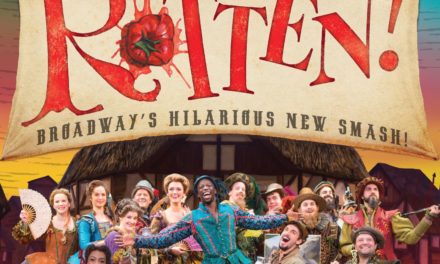The Protagonist’s Superobjective
Every protagonist worthy of our attention, affection, and time needs a grand goal—a superobjective—to pursue that will give him some kind of a purpose or path to follow. (Obviously, a protagonist can be a male or female, or occasionally more than one person. In this article I will use the single masculine pronoun, but I mean any gender or number of protagonists.)
If a story is well constructed, the audience will happily go along with the hero as he works his way toward his overall goal. Such a goal, also known as a “superobjective,” must be well established early on in a story or else the hero will flounder, directionless, lost in the weeds of life. Why would we ever bother watching such a story? It is the pursuit of a protagonist’s grand goal that grabs us and keeps our attention. We want to live vicariously through a hero’s struggles. We want to see if the hero can achieve his mission or not.
The Inciting Incident
The protagonist’s superobjective is almost always set up during the second of the seven plot points (story milestones) that can be found in pretty much every memorable, popular story. Plot Point Two is also better known as “The Inciting Incident.” Inciting Incidents tend to appear somewhere in the early part of most stories, typically between five and twenty minutes into a full-length musical. However, it is possible for such a moment to pop up as early as a story’s very first moment. Examples of Inciting Incidents include: in Cabaret, Cliff, unable to write, goes out to the Kit Kat Klub, where he meets Sally Bowles; in The King and I, Anna is told that she must live in the palace instead of the private residence that she had been promised. Offered a chance to leave Singapore, she opts to stay; in The Music Man, Harold Hill’s con begins to crumble the moment he meets Marian Paroo and is smitten.
An Interesting Throughline
The Inciting Incident usually dictates the path that the protagonist will follow for the remainder of his quest. It drives the protagonist toward his goal. And it sets up the protagonist’s “throughline,” meaning how he gets from the normal world that he knows at a tale’s beginning to his story’s New Normal at the end. The throughline is also known in the writing world as the story’s “spine.” By establishing a clear throughline for your hero’s journey, then rigorously seeing that the hero follows it, your story will remain on track as it heads to its inevitable ending.
Straight pathways are rarely that engaging, and neither are throughlines. It is far more interesting for a hero take a bumpy path toward his goal. The path must twist and turn and be filled with obstacles and conflict. Audiences want to feel as if the protagonist’s journey is extremely challenging. If it’s too easy then we get bored—without question the kiss of death for any show.
Throughlines must regularly shift direction while the action continues to rise as the story heads inexorably toward a dynamic climax. Yet through it all a hero must stay on target toward his ultimate superobjective—which he may or may not actually achieve. In Sweeney Todd, Sweeney gets his goal—to avenge his wife’s supposed murder, but at what cost? In Hello, Dolly, when Dolly Levi sets her sights on wealthy Horace Vandergelder, he has no idea what kind of irresistible force he’s attracted. In Avenue Q, Princeton determines to find his true “purpose,” which sets him on a journey that concludes in a place that he never expected.
Cut the Fat
All worthy stories are well integrated. To achieve integration, authors must eliminate all storytelling fat. No extra story baggage can be allowed. Everything must belong to the whole. Doing so helps to keep all the elements tied together and rolling along in a single, unified direction.
If you’re having trouble figuring out why your story for your musical book isn’t working, especially if it meanders and seems unfocused, ask yourself these questions:
- Is there conflict in every moment of every scene?
- Is the protagonist’s goal clearly established at the Inciting Incident?
- Does the protagonist doggedly pursue his superobjective at every step of his journey—even if he appears to be sidetracked by one distraction or another?
- Does the goal established by the Inciting Incident result after the climax in a clear resolution for the protagonist? This resolution may have a positive or negative outcome, but the goal needs to be resolved in some way that is satisfying to an audience. “Satisfying” does not mean a happy ending; it means the story delivers to the audience a powerful catharsis.
If the answer to any of the above four questions is “no,” then go back to your story and transform each of those answers to a resounding “yes.” By doing so you may find yourself pursuing your own goal of a legitimate show on a big stage for all of us to see and enjoy.
Happy writing!
For more instruction on story structure and the superobjective, get Steve’s book Beating Broadway: How to Create Stories for Musicals That Get Standing Ovations



















